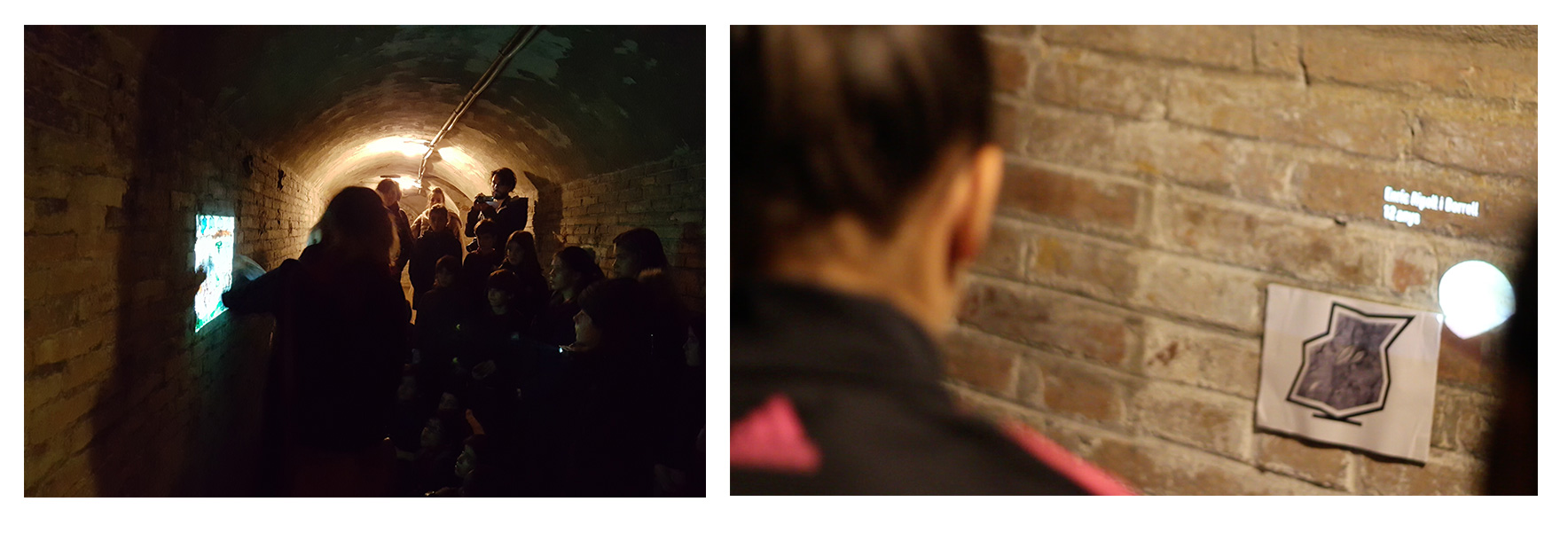was
The-World-as-Support: a novel paradigm for Augmented/Mixed Reality experiences
The-World-as-Support: a novel paradigm for Augmented/Mixed Reality experiences
The projects aims at defining a novel paradigm for AR/MR experiences and understand its potentials
The most widespread technological configurations for Augmented/Mixed Reality systems are based on smartphones and tablet devices and on the interaction paradigm known as Window-on-the-World (WoW). This paradigm provides the user with augmented information on the surrounding physical space by using the device’s screen to merge digital contents with the user’s view of the physical surroundings. Nonetheless, it runs the risk of isolating the users from their social and physical environments.
In contrast to this approach, we identified a novel and emerging conceptual paradigm to design ARMR applications for mobile technologies: the World-as-Support (WaS) interaction paradigm. This paradigm is based on projective augmented reality configurations which allow the users to augment the physical surroundings by intelligently projecting the digital information on the physical world.

Figure 1: World-as-Support interaction paradigm (left), Window-on-the World interaction paradigm (right)
In order to understand the potential of these paradigms we are currently exploring their affordances in different contexts and comparing their ways of mediating children’s understandings and experiences.
One project has been carried out in the context of creative storytelling. More information about the project EspaiStory can be found here.
Figure 2: Comparing Was and WoW in the project EspaiStory
Another project that has been conducted in the context of cultural heritage. More information about the project Refugi 307 can be found here.
 Figure 3: First prototypes of the WaS in the Spanish bomb shelter Refugi 307
Figure 3: First prototypes of the WaS in the Spanish bomb shelter Refugi 307
Related Publications:
Laura Malinverni, Julian Maya, Marie-Monique Schaper and Narcis Pares. (2017). The World-as-Support: Embodied Exploration, Understanding and Meaning-Making of the Augmented World. In Proceedings of the CHI Conference on Human Factors in Computing Systems (CHI ’17). DOI=http://dx.doi.org/10.1145/3025453.3025955
Marie-Monique Schaper, Maria Santos, Laura Malinverni and Narcis Pares. (2017). Co-Designing Virtual Heritage Experiences for Archaeological Sites based on the novel AR Paradigm World-as-Support. ACM Celebration of Women in Computing, WomENcourage Conference 2017. See abstract conference
Marie-Monique Schaper, Maria Santos, Laura Malinverni and Narcis Pares. (2017). Towards the Design of a Virtual Heritage Experience based on the World-as-Support Interaction Paradigm. In Proceedings of the CHI Conference on Human Factors in Computing Systems (CHI ’17). DOI=http://dx.doi.org/10.1145/3027063.3053089
Principal researchers
Narcis ParesResearchers
Laura MalinverniMarie Monique Schaper
Julian Maya
Cristina Valero
The project is funded by the Spanish Ministry of Economy and Competitiveness.
The Grant number is: TIN2014-60599-P
